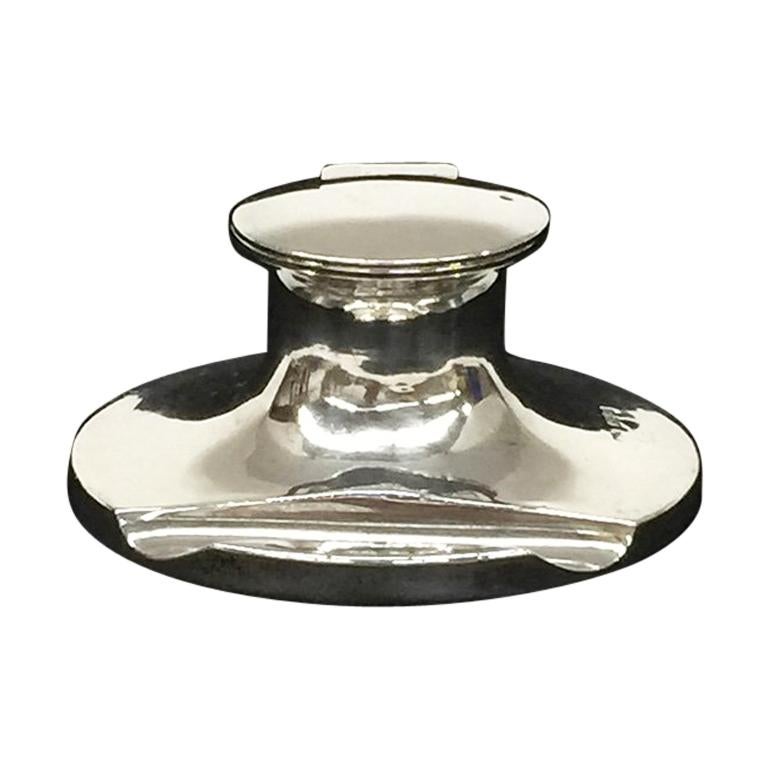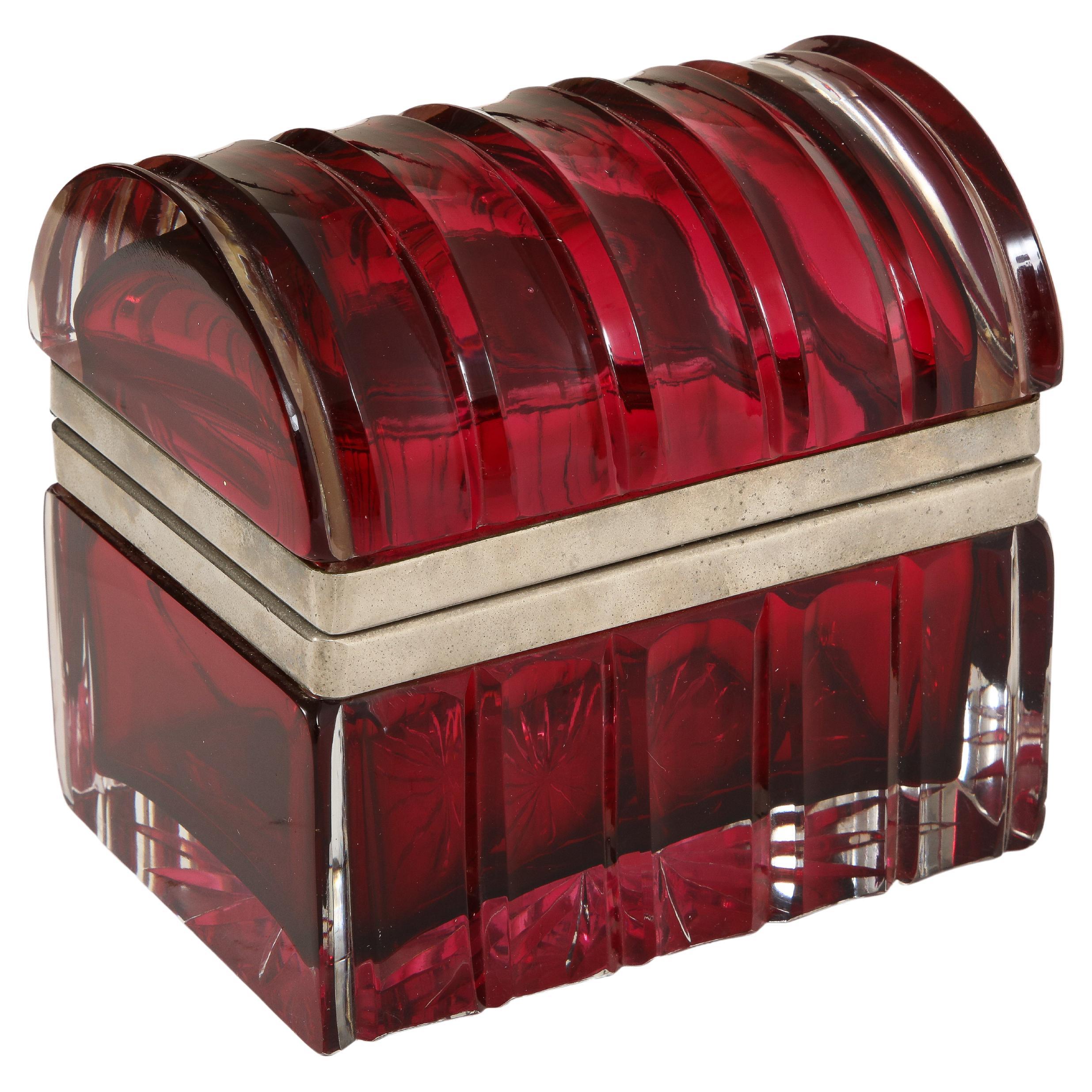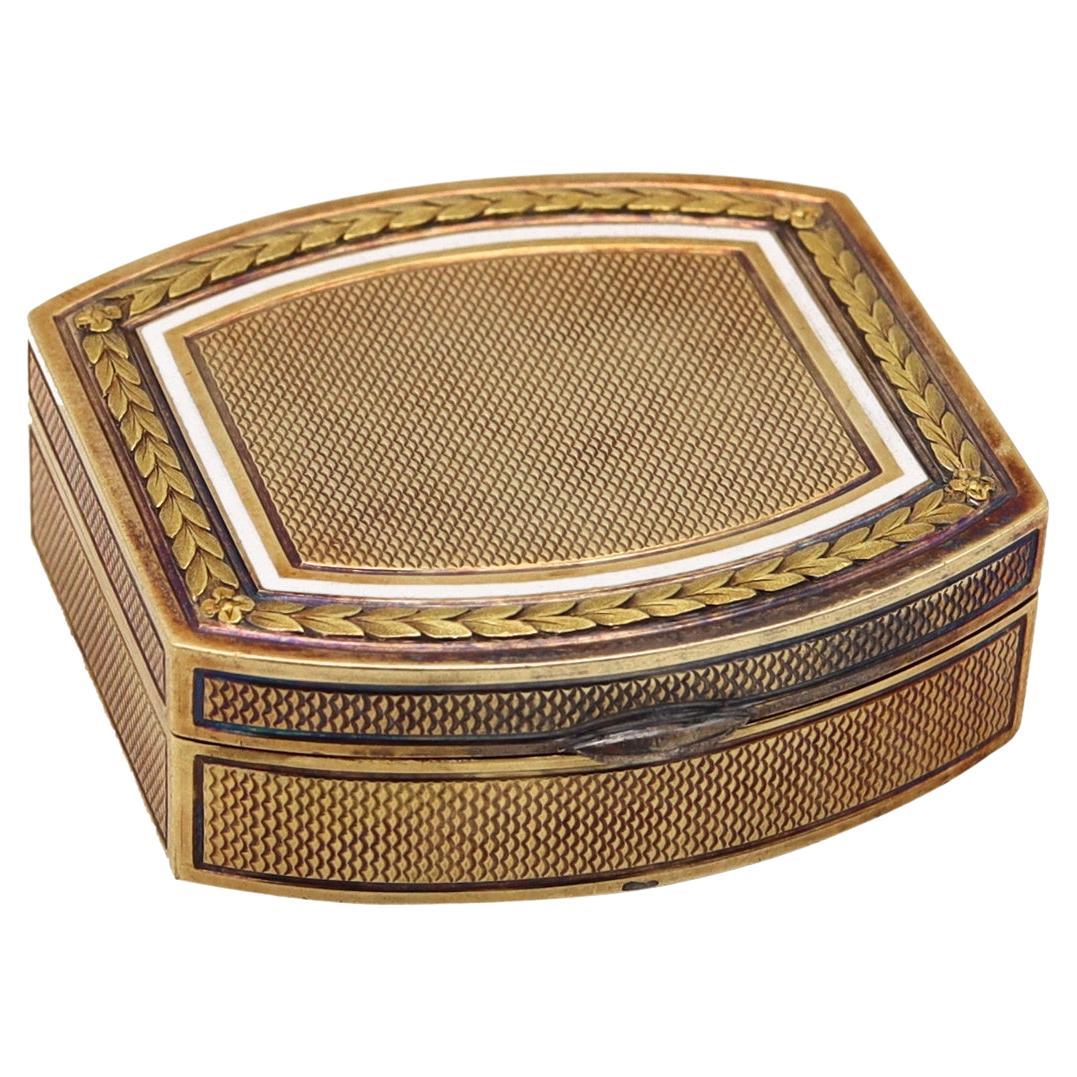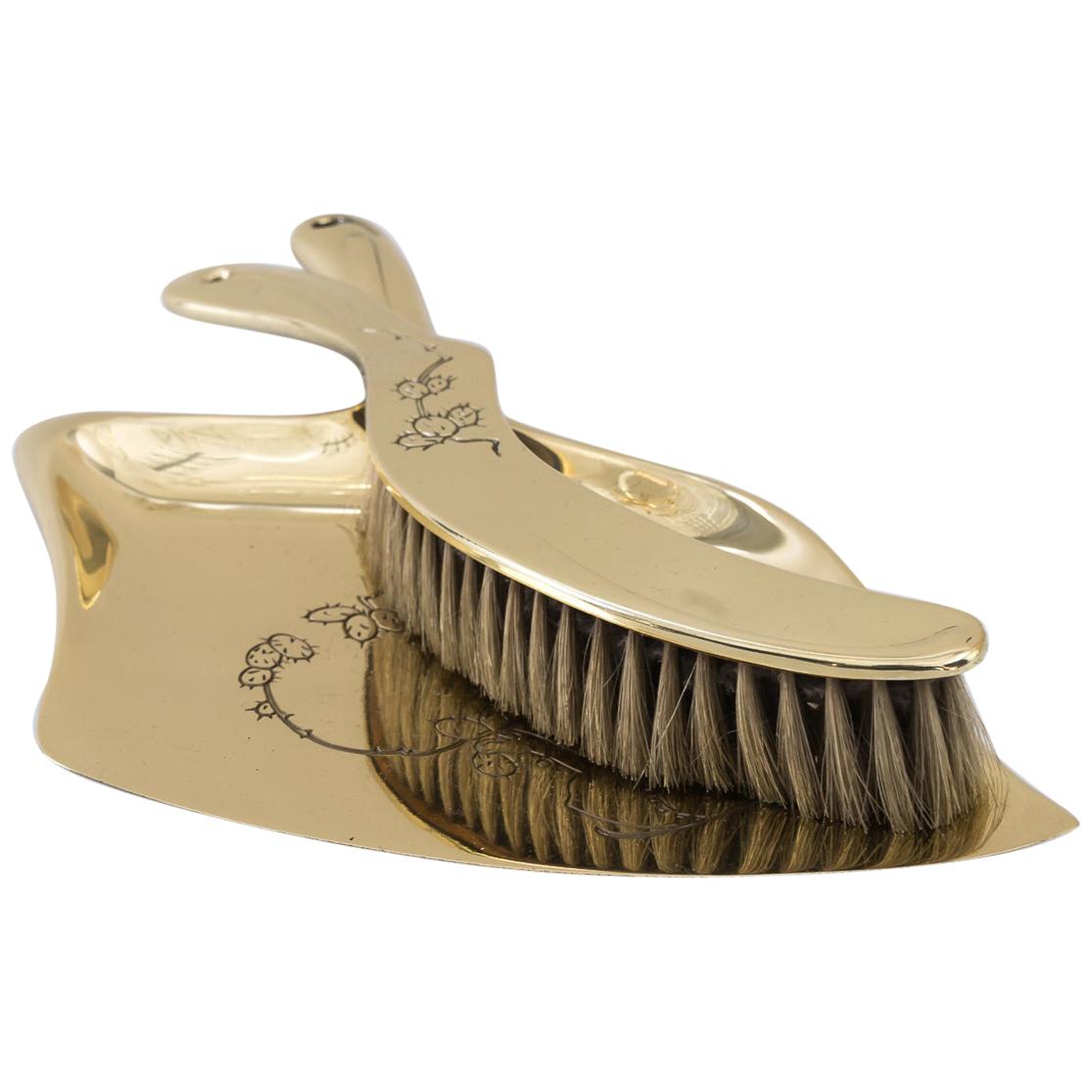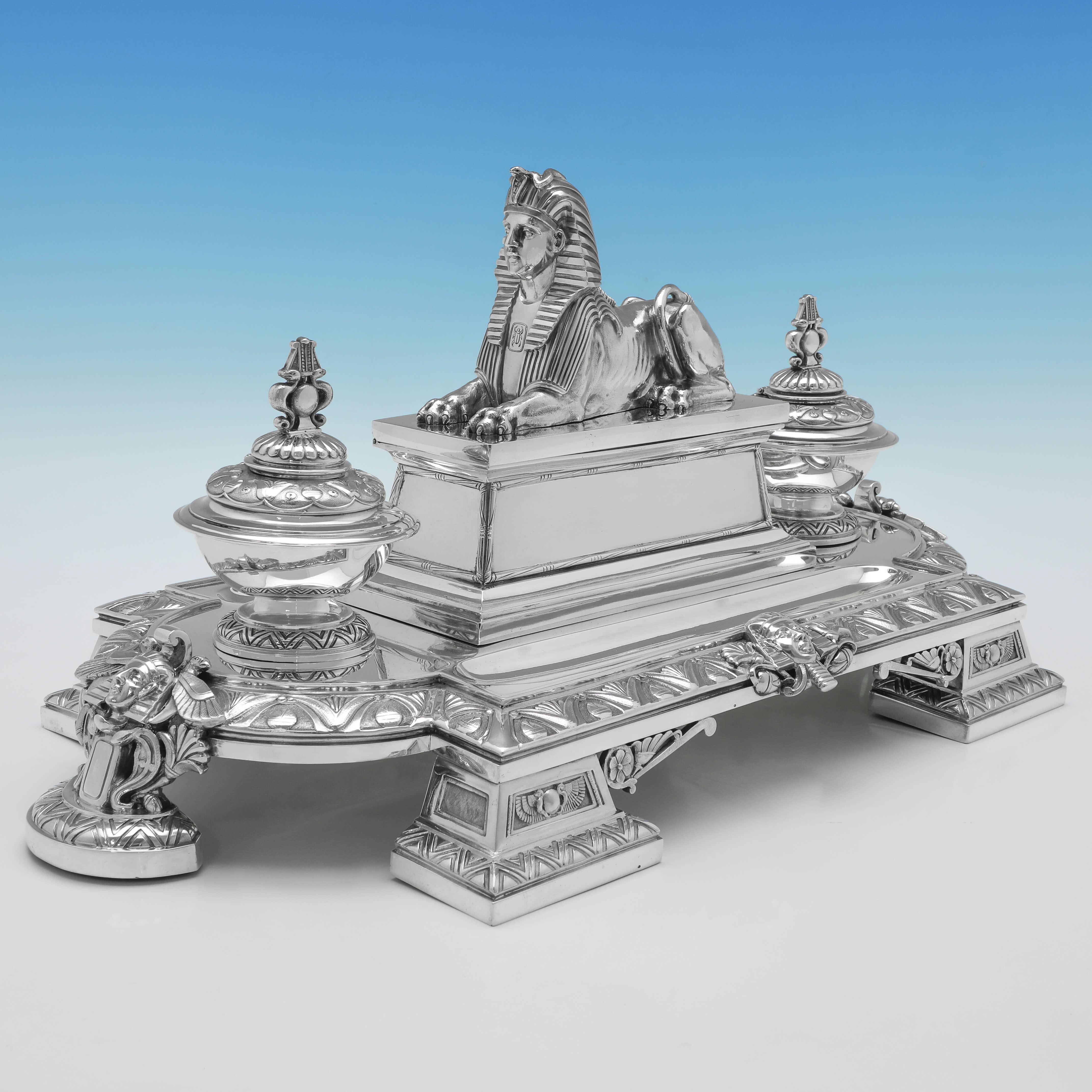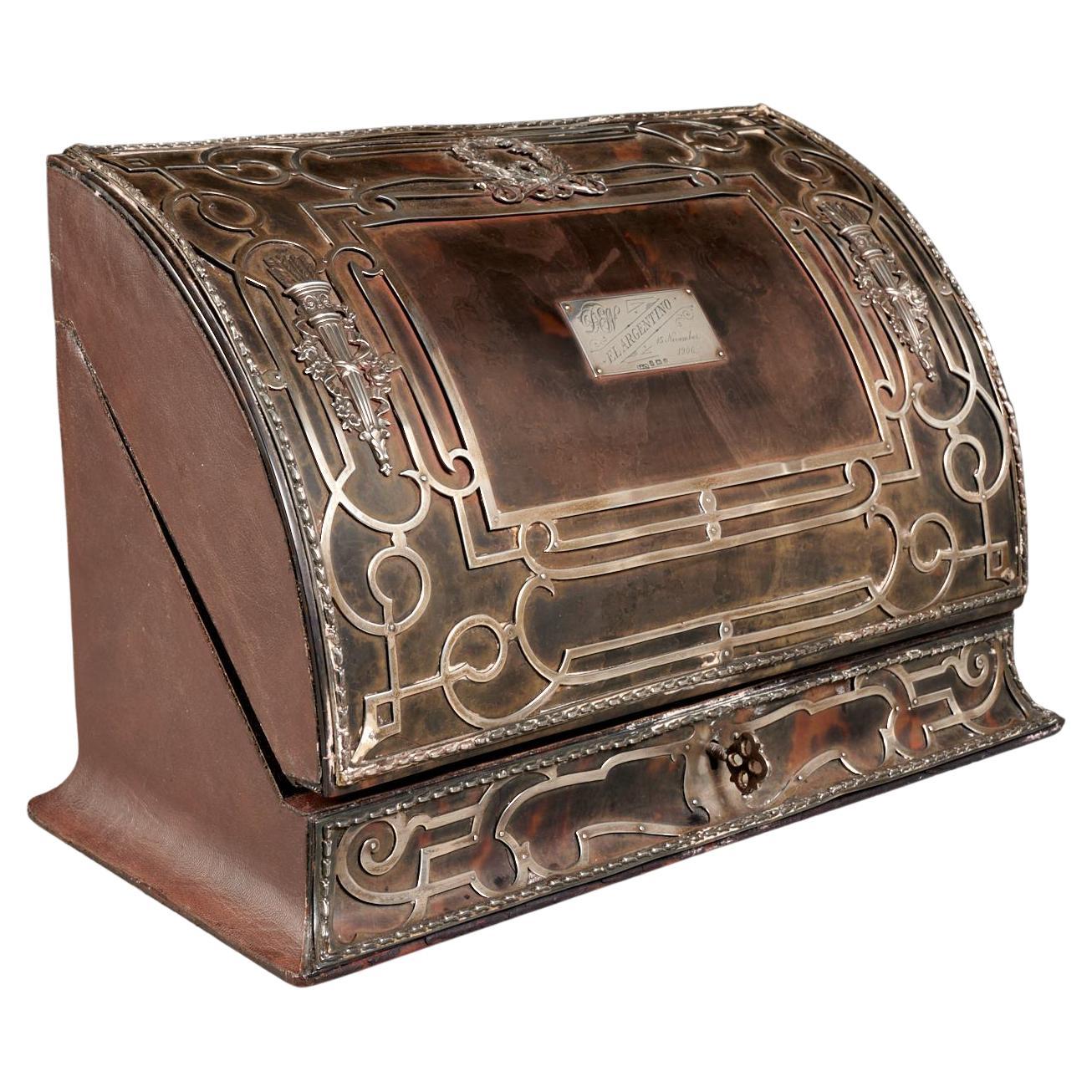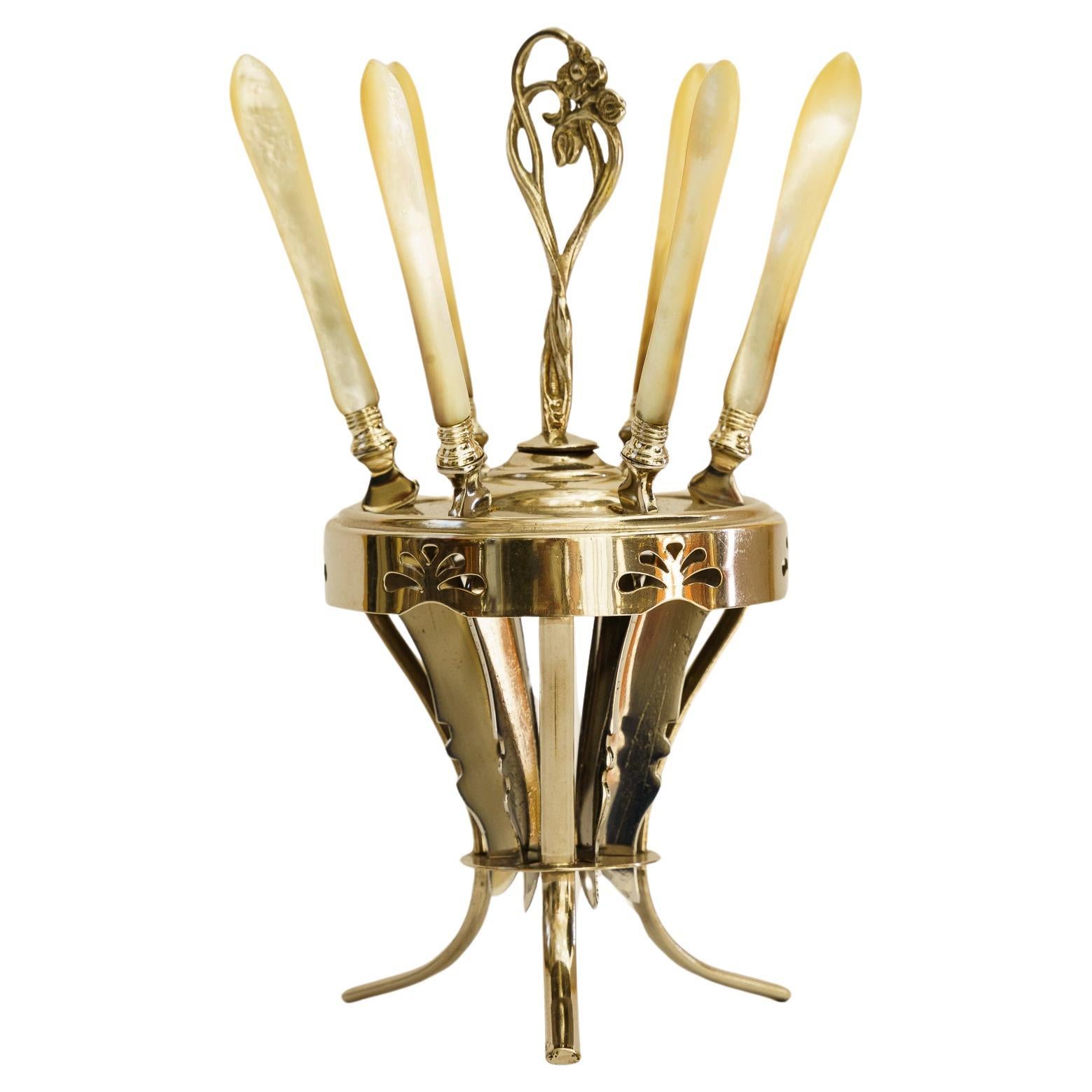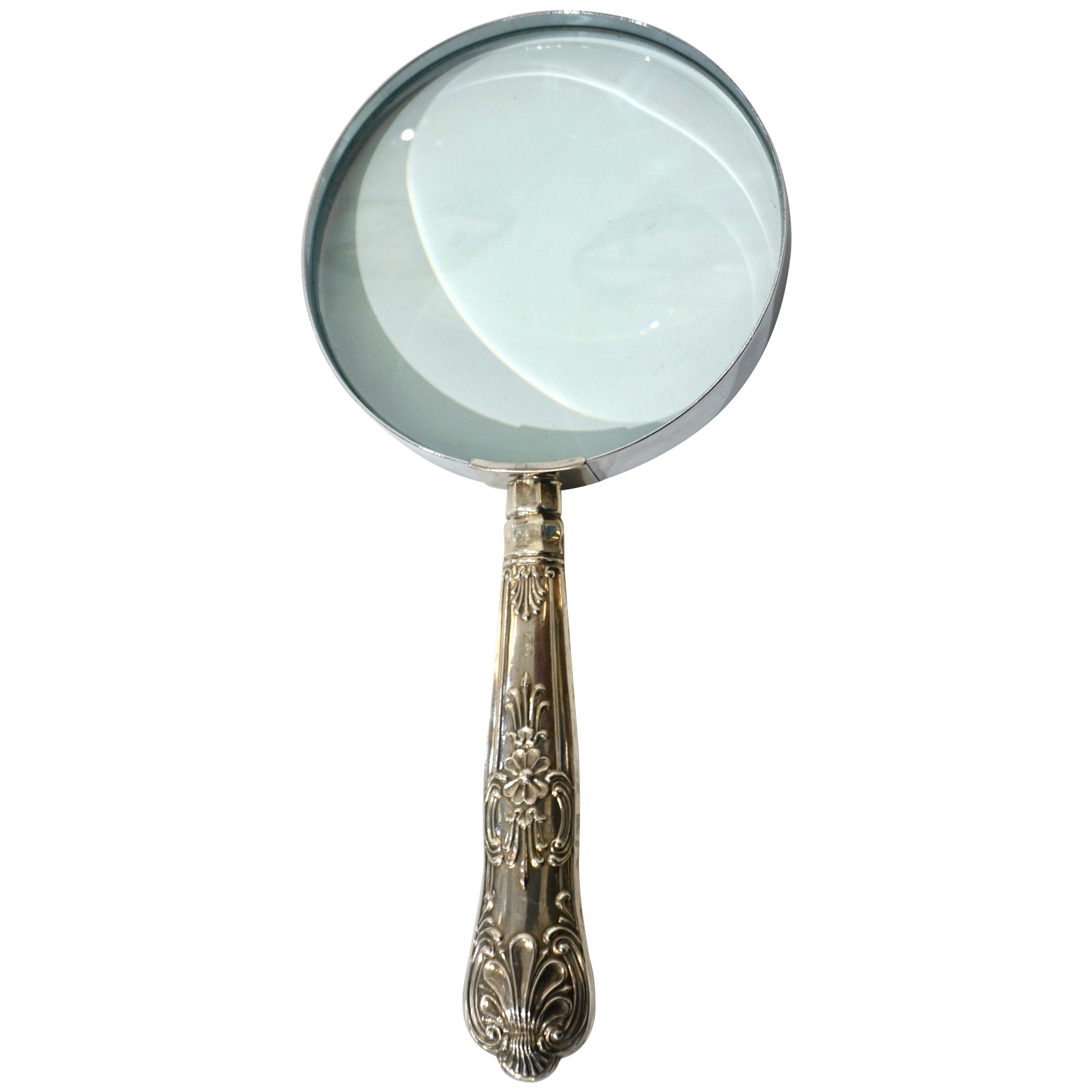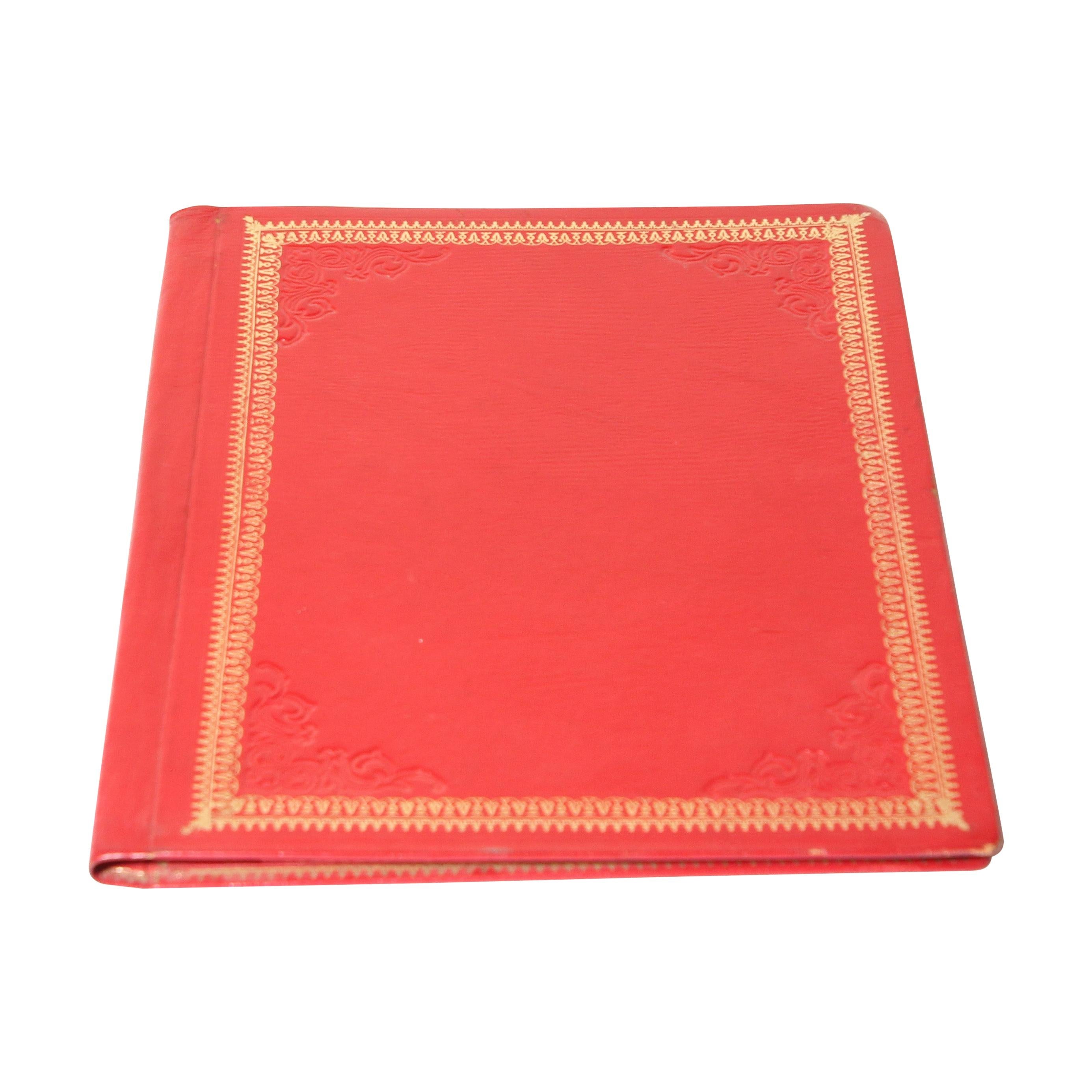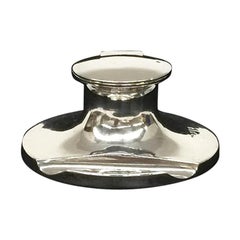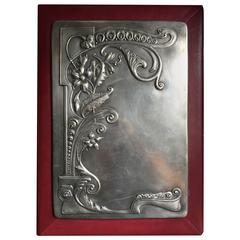
Russian Silver-Mounted Red Morocco Leather Portfolio, 1908-1917
View Similar Items
1 of 3
Russian Silver-Mounted Red Morocco Leather Portfolio, 1908-1917
About the Item
- Similar to:Karl Fabergé (Metalworker)
- Dimensions:Height: 2 in (5.08 cm)Width: 15 in (38.1 cm)Depth: 10.75 in (27.31 cm)
- Style:Art Nouveau (Of the Period)
- Materials and Techniques:
- Place of Origin:
- Period:
- Date of Manufacture:1908-1917
- Condition:Minor structural damages. Please note the silver cover and the bosses are antique, the leather diary and the lining are new. There are stains to the leather and the lining. The cover is of the 1908-1917 Imperial period.
- Seller Location:Brooklyn, NY
- Reference Number:Seller: 39221stDibs: LU171525136863
You May Also Like
- Edwardian Silver Mounted Hukin & Heath Cut Glass Jockey Cap Inkwell c1908By Hukin & HeathLocated in Rothley, LeicestershireEdwardian cut glass jockey cap inkwell by Hukin & Heath, mounted on a hallmarked English silver collar. Hinged collar with hallmark and engraved monogram cover Hallmarked Birmingham ...Category
Antique Early 1900s English Edwardian Inkwells
MaterialsSterling Silver
- Russian 1915 Moscow Nephrite Jade Desk Picture Frame Mounted in Gilded SilverLocated in Miami, FLNephrite jade and gilded silver desk frame. Beautiful neo classic desk picture frame, created in Moscow Russia, back in the 1915. Carefully crafted in the Russian imperial and Louis XVI style, with solid gilded silver, translucent nephrite green jade...Category
Vintage 1910s Russian Neoclassical Picture Frames
MaterialsJade, Silver
$3,188 Sale Price20% Off - English Silver Capstan Inkwell by Cohen & Charles, Chester, 1908By Cohen & CharlesLocated in Delft, NLEnglish Silver Capstan Inkwell by Cohen & Charles, Chester, 1908 Silver capstan inkwell with pen holder in front English silver Hall marked, Chester, ...Category
20th Century British Inkwells
MaterialsSilver
- 20th Century Italian Silvered Bronze Mounted Clear-over-red Domed Crystal BoxBy Vintage Murano GalleryLocated in New York, NYAn Unusual 20th Century Italian Silvered Bronze Mounted Clear-Over-red crystal box The box is composed of two sections of Italian clear-over-red crysta...Category
Antique Early 1900s Italian Art Nouveau Decorative Boxes
MaterialsCrystal, Bronze
- Henrik Wigström 1908 Russia Saint Petersburg Enameled Snuff Box in 14kt GoldBy Henrik Wigström 1Located in Miami, FLA snuff gold box designed by Henrik Wigström. Beautiful neo classic snuff box, created in St, Petersburg Russia, at the workshop of Henrik Wigström, back in the 1908. This piece has been carefully crafted in the Russian imperial and Louis XVI styles, in solid yellow gold of 56 zolotnik (14kt) and embellished with applications of white enamel. Decorated around with garlands and intricates dotted patterns. Fitted with an invisible hinge and close perfectly well. Weight: 36.65 Grams, (23.49 Dwt). Measurements: 41 mm by 39 mm by 14 mm (1.61 x 1.53 x 0.55 Inches). Hallmarks: Stamped on both parts with Russian marks; the kokoshnik post 1908 mark with the letter a for the city of Saint Petersburg, the maker's mark HW associated to Henrik Wigström inside an oval cartouche, scratched with his inventory numbers 86111 and the 56 zolotnik mark for the assay and warranty of the gold. Other Hallmarks: Stamped in the outside border, with German importation marks; the German Crown mark, the retailer mark AT inside an oval and the 585 mark for the assay and warranty of the gold. Henrik Immanuel Wigström born on 1862 and was a Finnish silver & goldsmith. He was one of the most important Fabergé workmasters along with Michael Perchin. Perchin was the head workmaster from 1886 until his death in 1903, when he was succeeded by his chief assistant Henrik Wigström. These two workmasters were responsible for almost all the imperial Easter eggs. Henrik Wigström was born in Ekenäs, Finland, and was apprenticed to a local Danish born goldsmith named Peter Madsén, a successful manufacturer of silverware who was familiar with the jewellery trade in the city of St. Petersburg, as at one time he had had a workshop there. Once in Madsén's employment, his master's trade with Russia, as well as his numerous business contacts here, brought him to work in St. Petersburg. Goldsmith Werner Elfström employed Wigström as a apprentice on his arrival in the capital in 1875. Wigström became assistant in 1884, at the age of 22, to Perchin, whose shop at that time was already working exclusively for Fabergé. Wigström became head workmaster at Fabergé after Perchin's death in 1903. The number of craftsmen in Wigström's workshop diminished drastically with the outbreak of World War I. By 1918, the Revolution forced the complete closing of the House of Fabergé. Aged 56, Wigström retreated almost empty-handed to his summer house, on Finnish territory, and died at Terijoki in 1923. His art is similar to Perchin's but tends to be in the Louis XVI, Empire, or neo-classical style. Nearly all the Fabergé hardstone animals...Category
Antique Early 1900s Russian Neoclassical Snuff Boxes and Tobacco Boxes
MaterialsGold, Enamel
$4,788 Sale Price20% Off - Jugendstil Broom and Shovel, circa 1908Located in Wien, ATJugendstil broom and shovel, circa 1908 Polished and stove enamelled.Category
Antique Early 1900s Austrian Jugendstil Desk Sets
MaterialsBrass
Recently Viewed
View AllMore Ways To Browse
Fountain Pen Herve Obligi
Georg Jensen Business Card
Georg Jensen Moneyphant
Gilt Bookstand
L V Back Pack
Lucite Sand Timer
Mcm Calendar
Modernist Tape Dispenser
Montre Rolex Suisse
Perpetual Desktop Calendar
Pulaski Desk
Rolex Leather Notebook
Silver Gavel
Slavic Cigarette
Teleconcepts Phone
Teledome Phone
Vintage Boxing Trophy
Agate Etui


